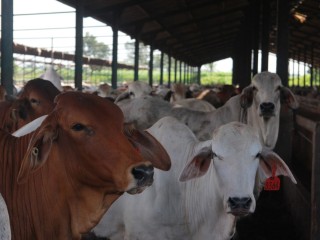 If export cattle are selling for relatively modest prices in northern Australia, but fetching a small fortune in Indonesia, who is making all the money?
If export cattle are selling for relatively modest prices in northern Australia, but fetching a small fortune in Indonesia, who is making all the money?
It seems a fair question to ask as Indonesia’s self-sufficiency policy drives prices in opposite directions at either end of the live export trade.
Indonesia’s decision to cut import quotas by 50pc in the past two years under its self-sufficiency policy has pushed beef prices to rarely seen heights in the country.
A kilogram of beef is now worth more than 100,000 Indonesian Rupiah, or the equivalent of A$ 10, more than many Indonesian workers earn in a week.
The supply-starved environment has also inflated the values of imported Australian cattle, which can now command as much as $3.40/kg liveweight ($6.80/kg carcase weight) after the standard 100 days on grain, according to sources, more than twice what a similar article might fetch in Australia.
However the lucrative prices on offer in Indonesia are not being reflected in prices being paid for export steers in northern Australia, where the cap on imports has ensured an oversupply situation will prevail this year.
With import quotas limited to 267,000 cattle for 2013, and no shortage of in-spec cattle available from Broome to Townsville to supply that volume, northern steer prices have recently slipped back to $1.75/kg lw.
The simple comparison of prices for Australian cattle ex Northern Australia and ex feedlots in Indonesia suggests that significant margins are being pocketed somewhere.
But, while that is true, it doesn’t tell the full story.
The main players between the producer and the processing sector in the live ex trade – exporters and importers – maintain that while the margins they can earn on imported animals are indeed significantly higher in the current market, the savage drops that have occured in their throughput as a result of the quota cutbacks mean they are still struggling to cover overhead costs.
A number of import industry sources who spoke to Beef Central in recent days – all of whom declined to be quoted publicly for commercial reasons – explained that while higher margins were helping to partly offset the impact of reduced throughputs, their continued high fixed costs meant they were behind in real income terms.
Most feedlots reported that they are currently operating at around a quarter to a third of usual capacity due to the quota limits.
Under Indonesia’s self-sufficiency policy, feedlots are required to source locally-bred cattle and undertake breeding programs in order to secure a share of import permits, an expensive exercise in the current high-priced Indonesian cattle market.
Importers say that in the majority of cases breeding and fattening of local cattle incurs losses which must be covered by the income or profits from their imported feeder operations.
To illustrate how tight supply has become, one importer explained that he traditionally sold more than 300 finished cattle a day from his feedlot, but now sells just 60, and has to ration that volume across a handful of ESCAS (Exporter Supply Chain Assurance System) approved supply chains.
In mid-2012 the operation supplied as many as 20 ESCAS approved supply chains, but due to volume reductions and the high costs of maintaining each supply chain, it had been forced to cut supply to around half that number, which it concedes has left some areas/townships with no access to beef.
“Importers are making better per head profits (on imported cattle) than three years ago, but they have huge feedlots which are only 20-25 percent of capacity, so the real income at the end of the day is actually less than before,” the importer explained.
“Fixed costs keep going, the bank still wants the interest on borrowings, we still have council rates, maintenance etc, etc and we have tried to maintain as much of our labour force as possible.
“I am passionate about my workers but last week we had to lay off 45 permanent staff, some had been with me for 10 years, and these people were not on low salaries.
“The Indonesian labour laws require substantial retrenchment packages for workers with some of them getting 15 to 20 months salary when laid off .”
Many feedlots had asked their employees to stay home, but still paid them their set monthly salary.
These were among the hidden costs of the self-sufficiency strategy.
One importer explained that his operations directly and indirectly supported more than 7000 families – of which there are six to eight people per family – prior to the import quota cutbacks, but with the decrease in incoming cattle their operation now supported less than 3000 families.
ESCAS had brought benefits to the trade but had not come cheap, the importer said: “All imports still incur massive costs and these will be ongoing if the trade wants to survive.”
Another import industry source said some feedlots had laid off over 200 workers.
“They have got massive overheads, these guys have got big depreciation bills, and monthly sales have more than halved.
“The answer lies in the fact that they have got big margins on cattle, but they aren’t selling many, and they have still got overheads to pay for.”
